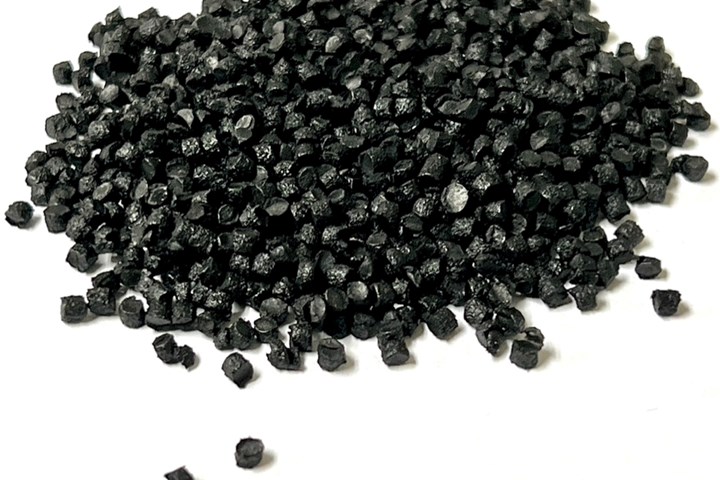TPE Made with 50% PCR Derived from End-of-Life Tires
Prism Worldwide has commercialized its first TPE with this type of recycled content based on its patented technology.

A thermoplastic elastomer (TPE) made of 50% post-consumer recycle content derived from end-of-use tires while maintaining the look, feel and processing of a typical petrochemically derived TPE has been introduced by of Kirkland, Wash. Company sources confirm that this is the first such TPE launched and that its patented Prism technology is compatible with both styrenic and olefinic based resins.
This process uses tire rubber as the primary feedstock in the production of polymer intermediates called PTR. These intermediate polymers are then compounded into injection moldable TPE pellets at the company’s facility in the Rochester, N.Y. area. (In November 2022, Prism acquired (CRC), a custom compounding company supplying compounds, resins, and colors to the plastics industry.)
The first compound in a series, Ancora C-1000, is suitable for use in a broad range of applications, such as automotive all-weather mats, weather stripping, and footwear. Available in black, the compound has a Shore A of 80 and is 99% domestically sourced meeting IIJA Buy America requirements. Compared to virgin synthetic rubber compounds, Prism’s base polymer has approximately 86% lower carbon footprint. “There is growing demand for recycled content throughout the industry, and high recycle content TPEs are not widely available in the marketplace. This product fills a unique market demand for both sustainability and performance. The technology we use can be applied over a broad range of applications and we look forward to working with the industry to grow this into a family of TPE compound products,” said Prism’s chief commercial officer Mark Kinkelaar.
Related Content
-
Bio-based Elastomer for Biopharmacuetical Tubing
Avient introduced its Versaflex elastomer formulated with bio-derived content.
-
Prism Launches Car Mats Molded from Recycled Tires
Lines of mats are made of proprietary TPE formulated with 50% tire reclaim.
-
Expanded Line of ‘Super’ Soft TPEs for Medical Devices
Kraiburg TPE has expanded its Thermolast M series of TPE compounds by additional hardness degrees.


